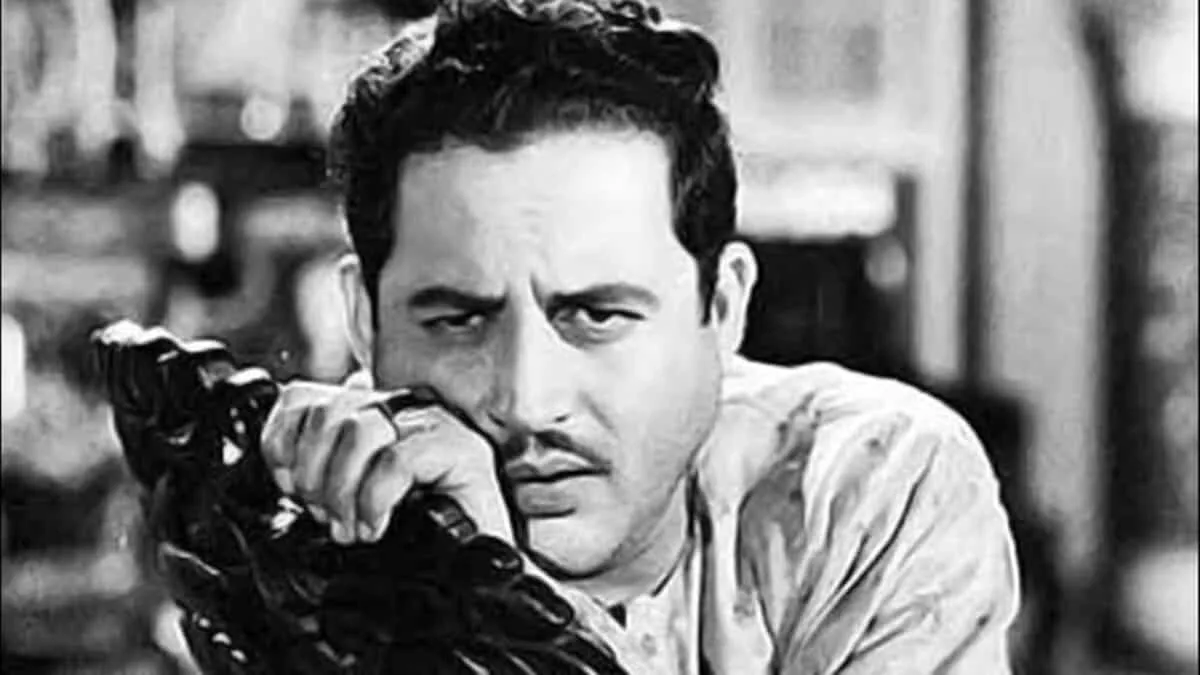Somebody once said that if ever there was a genius in the Hindi film industry, it was Guru Dutt. As an actor, director, choreographer and writer, Guru Dutt was in a class of his own. He was lauded for his artistic techniques and clever use of lighting while filming his shots. Many of his films have become internationally famous. July 9th, 2025 is the 100th birth anniversary of this legendary personality.
He directed a total of eight Hindi films. Two of his movies, namely Pyaasa (made in 1957) and Kagaz Ke Phool (1959), were included in Time Magazine’s 100 Greatest Movies list. He was included among CNN’s “Top 25 Asian Actors” in 2012.
It is said that Guru Dutt was influenced by the famous American filmmaker Orson Welles and he improvised on some of Welles’ methods. Dutt’s thoughtful use of slow tracking shots added cinematic depth, which was new to mainstream Indian films at the time. He heightened the depth of emotion with such techniques. After he did it with great success, others began to copy his ways.
Frustrated young man in Pyaasa
Many of his films had themes of alienation. Pyaasa was a typical example of this. Critics say it was his best film. It is now regarded as one of the greatest movies ever made. It marked a staggering achievement on many fronts such as S.D. Burman’s soulful music, Sahir Ludhianvi’s thought provoking lyrics as well as cinematographer VK Murthy’s superb composition of the shots.
According to his niece Kalpana Lajmi (who also became a noteworthy film director), the plot was based on Guru Dutt’s own experiences. She said that her uncle inherited his creativity from his father. After independence in 1947, their family was living in a small accommodation, and Guru Dutt was desperately trying to secure a job with his talents. But he faced rejection after rejection. Out of this grief and hardship, grew the story of Pyaasa.
In Pyaasa, Guru Dutt, playing the lead role himself, portrayed a talented poet who has to fight against society’s indifference and exploitation. In Pyaasa, he was the original angry young man long before Amitabh Bachchan donned that mantle. The song Yeh Duniya Agar Mil Bhi Jaye To Kya Hai (sung by Mohd Rafi) highlighted movingly the frustration and dejection that the character felt.
However, unlike the Big B, Guru Dutt’s angry character did not take recourse to violence to solve his problems. Back then, the social outlook was different, and extreme violence on the screen would not have been accepted by the film goers. Violence based on revenge became popular only after the rise of Bachchan and villains like Amjad Khan and Ajit.
Similarity with Dutt’s life
His 1959 film Kaagaz Ke Phool was another widely acclaimed work. Ironically, Dutt’s life seemed to follow the path of the main protagonist after the film was released. It failed at the box office, and it was only in the 1980s that understanding and social norms changed, and the film was seen in a new light.
But its initial failure had a crippling impact on Guru Dutt and brought his studio to the verge of ruin. After that failure, Dutt was so dejected that he never directed any other film again. But today it is considered to be one of the finest films to have ever been made in India.
Unforgettable songs
Guru Dutt made innovative use of music in his films. The songs were catchy and tremendously popular. Many of the lilting songs in his films are a craze even now. Some of them include Mohabbat Kar Lo Ji Bhar Lo (from Aar Paar), Sun Sun Sun Zalima (also Aar Paar), Sar Jo Tera Chakraye (Pyaasa), and the beautifully poetic lyrics of Chaudvin Ka Chand as well as many others. Geeta Dutt sang many memorable songs in her husband Guru Dutt’s films. She sang in hit films such as Mr and Mrs 55, CID, Pyaasa, Kaagaz Ke Phool and Sahib Bibi Aur Ghulam.
Important women characters
Invariably, Guru Dutt’s films had crucial but complex women characters. Be it the heiress in Mr. & Mrs. 55, or the tragic Chhoti Bahu in Sahib Bibi Aur Ghulam, they were all very well portrayed and played a central role in the plot.
The 1962 tragedy classic Sahib, Bibi Aur Ghulam, directed by Abrar Alvi, is well known for its compelling narrative and powerful performances by Meena Kumari and Waheeda Rahman. The film delves into the decadence of the zamindari system and the plight of women in a patriarchal society.
Strong bond with Johnny Walker
Guru Dutt and Johnny Walker shared a strong bond. Even outside the film-making the two were close friends. It was no wonder that Johnny Walker was given such lovable roles to play in Guru Dutt’s movies. The filmmaker saw the potential in Johnny Walker and gave him key roles.
Guru Dutt died as a result of an overdose of sleeping pills and alcohol. But whether it happened by accident or design, it has never been fully established. In an interview with Arbaz Khan, Waheeda Rehman said that Guru Dutt was probably suffering from depression but nobody had realised it.
Guru Dutt’s legacy and influence on the Hindi film industry are as vast as an ocean. He transformed mainstream Hindi cinema by merging visual artistry with emotional depth and social criticism. Guru Dutt’s unparalleled contribution to Hindi cinema and his reach continue to resonate with critics, scholars, and filmmakers even a century after he was born.







